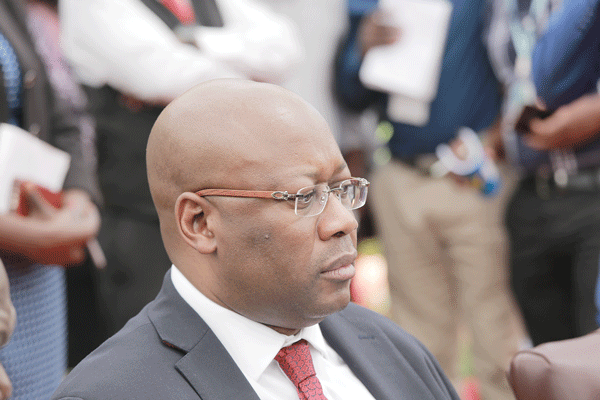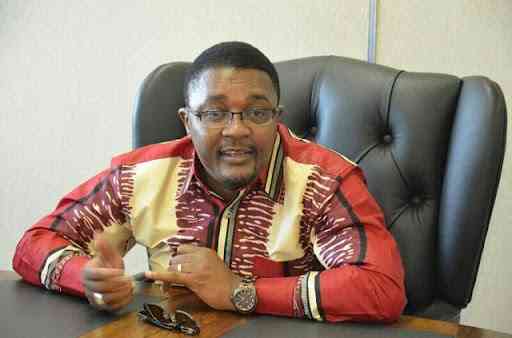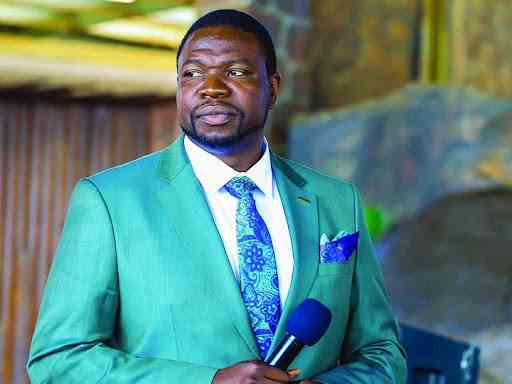
news in depth:BY ANDREW KUNAMBURA
PICTURESQUE hills, streams and valleys graced with a variety of towering tree species reveal the outstanding beauty of a serene outback called Svisva in Goromonzi district.
A snapshot of the slopes of the village’s mountains, with its eccentric green liberty, is memorable.
But the idyllic atmosphere in the district’s natural gem has been poisoned by ructions between villagers and BETA Concrete (BETA), a mine that is devouring the charming panorama into a wasteland as it extracts quarry.
Investigations by The Standard suggest the tension in the area could be worse than imagined and the closure of the mine, if operations are found to be violating environmental laws, could spell doom for the country’s booming construction industry.
BETA arrived in the area two years ago, lured by the spectacular granite outcrops which promised decades of successful extraction, and immediately went on a massive extraction spree with very little regard to the environment.
The mining adventure has, however, angered the local community, which alleges that it is losing fertile agricultural land and has to cope with a severely damaged environment.
The community is accusing management and the mine of failing to comply with the Mines and Minerals Act on environmental issues.
- Chamisa under fire over US$120K donation
- Mavhunga puts DeMbare into Chibuku quarterfinals
- Pension funds bet on Cabora Bassa oilfields
- Councils defy govt fire tender directive
Keep Reading
They say they have been without clean water for the past two years because rivers were being polluted by discharge of potentially toxic chemicals.
Several villages that have lived around these hills for generations and have had no significant problems since the mine started operating, over 60 years ago, now suddenly find themselves having to defend their territory.
Rural settlements rarely shift positions, but Svisva village, which is closest to the mine, could be relocating to avoid being swallowed up into the earth.
The mine uses opencast and mountaintop removal methods in its pursuit for quarry — and seven other minerals, as specified in its operating licence.
During a visit to the area, The Standard witnessed the enormous scale of environmental degradation and spoke to villagers and traditional leaders, who had no kind words for the mine operators.
A range of artificial hills formed by mine dumps of quarry dust, are replacing the original landscape that now has very little vegetation growing.
Patches of grass and low bush break the now barren-looking landscape.
Hills are being ravaged mercilessly for what they carry and some of the hills have been completely destroyed, with the miners still eating into them. And where they once stood, deep craters have taken their place.
Debris is pushed in huge quantities to the valley below, burying trees and other vegetation while contaminating streams that feed into the nearby Munhenga River, whose waters the villagers say have significantly receded since mining activities started.
Villagers, who draw water from it for domestic use, gardening and for their livestock, spoke of their bitter co-existence with the mine which, far from being a blessing, has become a curse.
But the mine seems to have somehow won the support of local politicians and other community leaders, who reportedly brand everyone opposing its activities opponents of Zanu PF, an abomination for which one can pay dearly.
There is no middle ground or alternative: You either support the mine or you don’t, and you hate those on the other side as wealth and the lust for money corrodes the once closely-knit community.
As toxic chemicals used in mining and the massive land degradation increase, so has the hatred and tensions that have developed between people, who support the mining project and those that oppose it.
“It’s a dreadful situation for us here,” Svisva village head Langton Masawi said as he took The Standard crew on a tour of the scarred slopes.
“The mine must stop digging, or else the land faces certain destruction.
“When they initially came here, they told us they would employ our children, drill boreholes in the community and improve our main road, but nothing has been done yet.
“When we try to engage them, we are told to shut up. They bring workers in a minibus all the way from Harare daily,” he said, labouring his frail 85-year-old body over the hazardous granite overhangs punctuating the area.
He chairs the Svisva Development Association, which was established recently to champion their cause.
The tension in the community became clear when a local Zanu PF district chairman identified as Leo Matemai came racing over the slopes as he sought to prevent the investigating sojourn from proceeding further.
“I am the party’s district chairman here and I am not going to allow you to corrupt the people.
“Why are you trying to frustrate development in the area?” he shouted as soon as he was within reach.
But the headman and his committee members told him off, saying: “This is our area, we are the custodians of the land and we do what we want. Go report wherever you wish.”
Defeated, Matemai resorted to disgruntled murmurings as he retreated to his home.
A mine security guard, who tried to stand in the way also suffered the same backlash.
Over on the other side of the Svisva hills, villagers told horrendous stories about their ill-treatment at the hands of the mine.
They said for the past two years, they have had to flee their homes on a daily basis around 6pm when mine workers start blasting the massive granite outcrops to escape from deadly flying fragments.
“Every day around 6pm, they sound the siren to indicate that blasting is about to start and we have to run at least 1km away from our homes to safety because the debris will not fly that far.
“Many times, we return to our homes around 9pm or even later. It’s like we are in a war situation,” 36-year-old Hazvinei Samboko, a mother of three, said.
“Sometimes they blast unannounced and we have to abandon our chores and run for life,” she said.
Givemore Denga (38) showed us the corrugated iron roof of his house, which has been virtually destroyed by the debris.
“They claimed they would relocate us before mining started but two years on, we are still waiting. I fear for the lives of my two minor children,” Denga said as he showed the news team the damaged roof, hit five times by flying rocks.
He said one night, he returned from the routine escape to find a rock the size of an adult person’s head having bored through the roof before settling on a basketful of his tomatoes which were ready for the market.
The company only offered to buy three iron sheets, which according to him, have since been damaged as well.
For Judith Marimo (60), who is asthmatic, life in the past two years has been unbearable.
“My condition is worsening because of the dust their trucks blow every day as they ferry the quarry off to Harare. I have been suffering more frequent attacks over the past two years and it’s having a toll on my health,” she said.
Chief Chinamhora, under whose jurisdiction the area falls, said he would be personally visiting the mine and instruct them to close until public safety is observed.
“I will be personally going there soon to check on the situation. “They have to shut down and relocate people first before resuming operations,” the chief said.
In responses sent via email, BETA claimed all its operations were legal and legitimate.
“BETA Concrete acquired a total of three claims in the Svisva area. The first claim is a 94-hectare claim called Smart claim.
“This is the only claim that we are working on.
“No quarrying activity can take place without the relevant clearances from a number of regulatory authorities, including Environmental Management Agency (EMA).
“In this regard, the company was issued an environmental impact assessment (EIA) certificate for the Smart claim site in 2018.
“This is the same site that the company is working from,” BETA group commercial director Cynthia Chizwina said.
However, further investigations revealed that the company does not have relevant documentation for the particular claim, which has caused ructions in the community, but for a different claim.
This was confirmed by EMA, which said subsequent to the visit the by The Standard, they have instituted processes to close down the mine.
“In their initial EIA licence, the company had indicated that blasting would be confined to the western side of the mine and would do addendums if any need arose for them to blast within their vast claim area,” EMA publicity manager Amkela Sidange said.
“However, the company has started operations on the eastern side, which required an addendum to address relocation issues.
“The mine was, therefore, issued with an order to stop blasting in consultation with affected households.”
Chizwina also dismissed villagers’ complaints saying their own assessments had indicated that none of them would be affected, but ironically at the same time acknowledged damages to their houses “In terms of the regulations and at the time that the EIA was conducted, none of the homesteads were found to be inside the claim that would have deemed relocation necessary. It is from the commissioning exercise that it was realised that there was an effect on some households that are outside of the claim,” Chizwina said.
“At BETA’s instigation, consultations with all the relevant stakeholders were held and relocations of all affected households are underway under the supervision of the Ministry of Lands.
“The relocation exercise is fully funded by BETA.”
She also said the damage to the environment had nothing to do with her company’s operations, attributing it to the natural phenomenon of climate change.
“Climate change is a reality that is currently affecting the whole of southern Africa.
“The country is currently in the throes of a severe three-year drought which has affected most water sources in the country.”
The mine has also reportedly employed militant security officers, who harass trespassing villagers. One woman complained a security guard went off with her daughter-in-law.
“They are taking our daughters. Mine was snatched only last month,” Prisca Amato (66) said.
Chizwina, however, said the company has cordial working relations with the community.
“BETA Holdings’ policy is that we work well and engage all people with respect and integrity in line with our organisational values.
“Any staff member who violates this policy is liable for disciplinary procedures,” she said.
“BETA has, from inception of the project, held community consultations with residents, community leaders, traditional leaders as well as local authorities to discuss issues around the project.
“The consultative process is on-going with the last meeting having been held on Friday the 14th of August 2020 in Svisva.
“It is our aim to impact the community positively as we are now residents of the area by virtue of our presence there.
“As a responsible company, the safety and preservation of human lives takes precedence over all else.
“We, therefore, strive not only to comply with blasting regulatory requirements, but to go above and beyond that in an effort to avoid unfortunate accidents.
“There is a clearly documented blasting procedure, and whilst in terms of the regulations, homesteads must be at least 300 metres from the blast site, we take extra precautions to evacuate people, who in our view, are resident in close proximity to the blast site.
“To this end, residents are notified of the intention to blast on the morning of the day of the blast.
“They are given further notification 30 minutes before the blast and our staff do a door-to-door inspection to ensure that all the identified homes are evacuated.
“A siren is also sounded to warn residents of the impending blast.
“All blasting activity is done during the day and no residents have returned to their homes at night.
“The noise emissions are covered in terms of the EIA and EMA guidelines and therefore are compliant with the set radius guidelines.”










